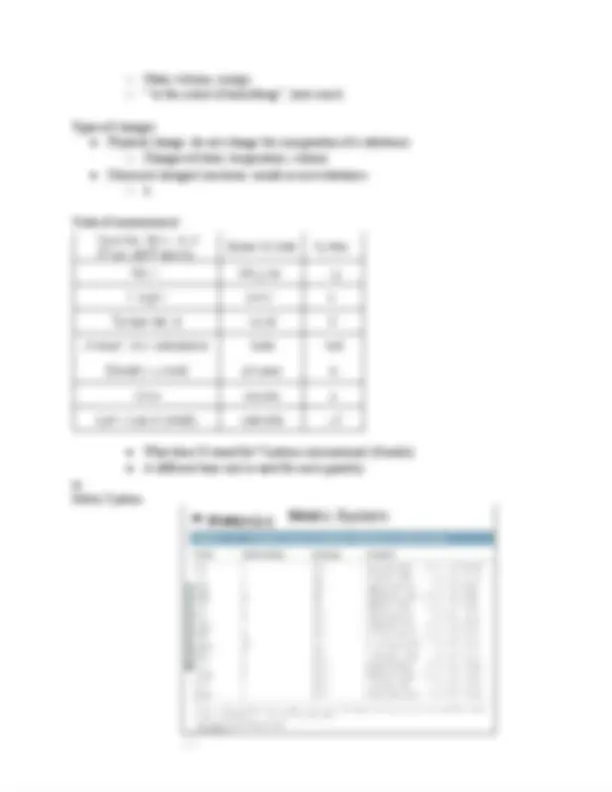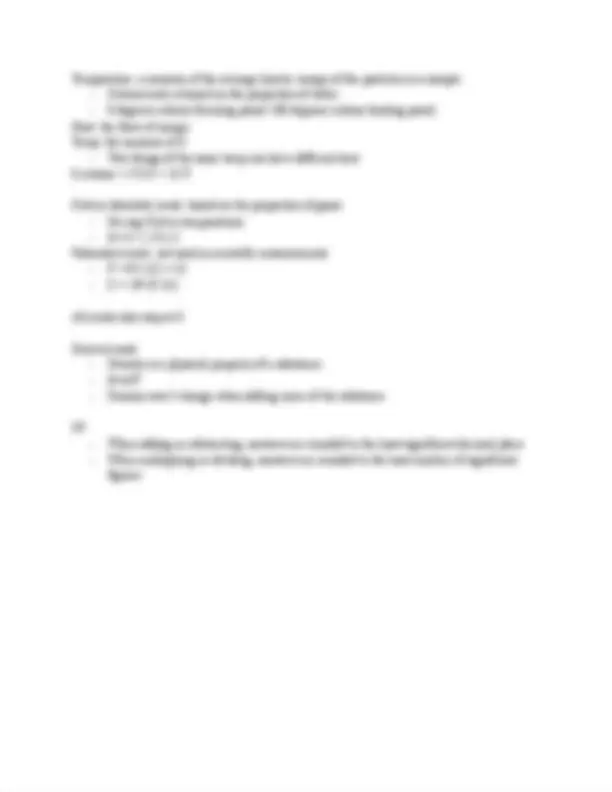




Study with the several resources on Docsity

Earn points by helping other students or get them with a premium plan


Prepare for your exams
Study with the several resources on Docsity

Earn points to download
Earn points by helping other students or get them with a premium plan
Community
Ask the community for help and clear up your study doubts
Discover the best universities in your country according to Docsity users
Free resources
Download our free guides on studying techniques, anxiety management strategies, and thesis advice from Docsity tutors
Study notes for chemistry chapter 1
Typology: Study notes
1 / 4

This page cannot be seen from the preview
Don't miss anything!



Chemistry Chapter 1 Study Guide What is chemistry? ● Studies of properties and behavior of matter ● “Central science: States of Matter ● “Classification of matter” ● Gas: no fixed volume or shape; can be expressed or expanded ● Solid: definite shape and volume ● Liquid: distinted volume but no shape Matter ● Has mass and takes up space ● Atoms: smallest unit of matter; forms a chemical element; neutral; building blocks of matter ● Molecules: a group of atoms bonded together; smallest unit of a chemical compound that can take part in a chemical reaction ● Elements: at the molecular level are composed of only one kind of atom; pure substance that contains only one type of atom ● Compounds: are substances composed of two or more elements BP/ FP ● BP of water is 212 F, 99.7 C ● FP of water is 32 F Law of definite proportions ● “Law of conservation of mass”; “Proust’s law” ● All samples of a given chemical compound much have same elemental composition
Pure substance VS. Mixture ● Pure substance: has distinct properties and a composition that does not vary from sample to sample; can be an element or a compound ● Mixture: combinations of 2 or more substances in which each substance retains it chemical identity Classification of matter ● Homogeneous: uniform throughout ● Heterogenous: not uniform throughout Types of properties ● Physical properties: can be observed without changing a substance into another substance ○ ex : BP, FP, density, mass, volume ● Chemical properties: can only be observed when a substance is changed into another substance ○ ex : flammability, corrosiveness, reactivity with acid, toxicity ● Intensive properties: are independent of the amount of the substance that is present “scale invariant” ○ Density, BP, FP, color ● Extensive properties: dependent upon the amount of the substance present
Temperature: a measure of the average kinetic energy of the particles in a sample